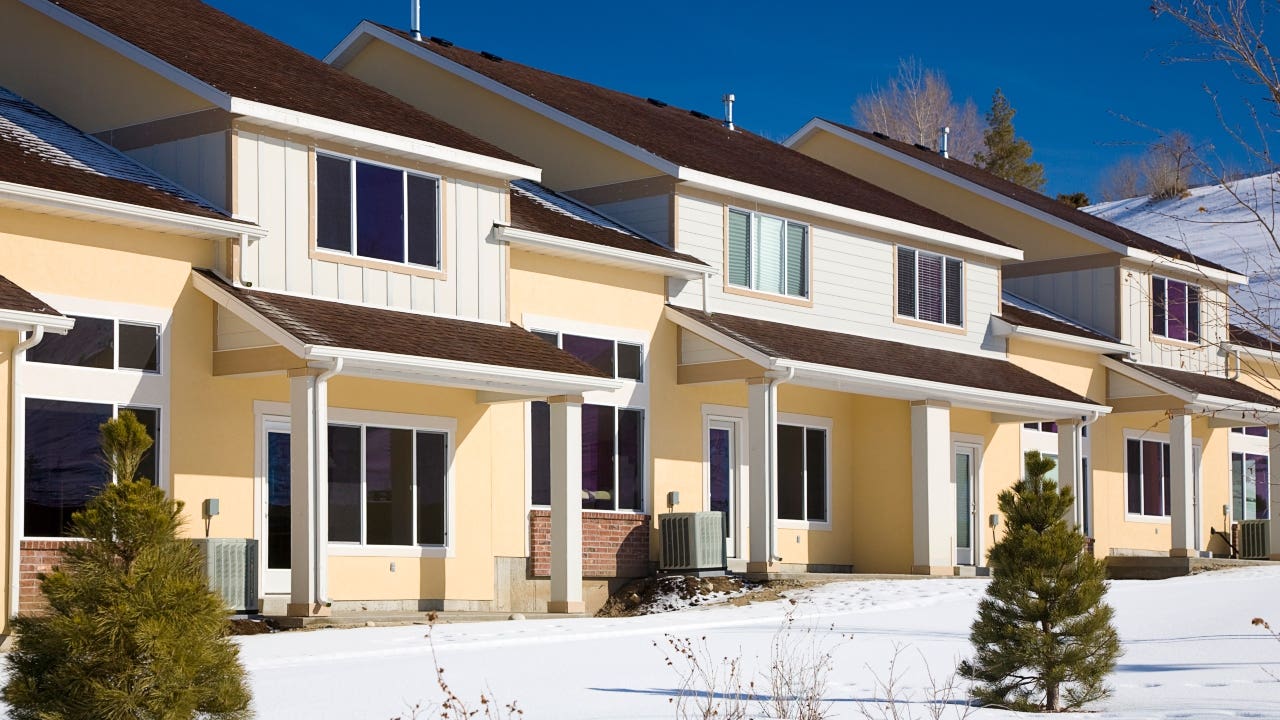What are guaranteed mortgage loans?

Key takeaways
- A guaranteed mortgage loan typically offers looser eligibility requirements — such as lower credit scores and higher debt loads — than a conventional loan.
- Private-sector lenders fund guaranteed mortgages, but they’re backed by guarantors, often government agencies, that will pay the lender if the borrower defaults.
- Many low-down-payment mortgages are made possible by a guarantee.
What is a guaranteed mortgage?
A guaranteed loan is any loan backed by a party other than the lender. If the borrower stops repaying the loan or defaults, the third party — also called the guarantor — pays the lender some or all of the outstanding debt.
A guaranteed mortgage is funded by a private-sector lender, but the guarantor is usually a government agency.
How guaranteed mortgages work
With a guaranteed mortgage, a third party guarantees, or agrees to be responsible for, some or all of the loan if the borrower defaults. The guarantee protects the lender, not the borrower.
Guaranteed loans are most often backed by the U.S. government, namely the Federal Housing Administration (FHA) and the Department of Veterans Affairs (VA), which back FHA loans and VA loans, respectively. The Department of Agriculture also guarantees USDA loans in eligible areas.
Ultimately, the guarantee allows the lender to approve a borrower who isn’t making a substantial down payment or might otherwise present more risk, such as having a lower credit score.
However, guaranteed mortgages must still meet underwriting standards established by the lender and the third party, and the lender may have more stringent requirements than the guarantor. For instance, the FHA requires a minimum credit score of 580 to allow a borrower to put just 3.5 percent down, but some lenders set the minimum higher, at 620.
9%
Source: National Association of Realtors
Current guaranteed mortgage rates
The rates for guaranteed mortgages may be, but aren’t always, slightly lower than conventional — or non-guaranteed — mortgage rates.
For example, as of this writing, the average mortgage rate for a 30-year conventional loan is 6.91 percent, while the average rate for a VA loan is 6.99 percent, and the average rate for an FHA loan is 7.08 percent.
Types of guaranteed home loans
There are multiple guaranteed loan programs, each with different features and qualifications.
FHA loans
FHA loans are targeted toward borrowers who may struggle to qualify for a conventional loan.
- Down payment requirement: Borrowers can put as little as 3.5 percent down, provided they have a credit score of 580 or better.
- Credit score requirement: You can qualify for an FHA loan with a credit score as low as 500, but you’ll need to make a 10 percent down payment.
- Debt-to-income (DTI) ratio requirement: Borrowers can qualify with a 43 percent debt-to-income ratio, or up to 50 percent with “compensating factors,” such as cash reserves or a higher credit score.
- Fees: FHA borrowers must pay mortgage insurance premiums, including an upfront premium of 1.75 percent of the loan principal, as well as an additional amount with their monthly mortgage payments. In many cases, the annual premium can’t be removed unless you refinance to a different type of loan or pay off your FHA loan completely.
VA loans
VA loans are available to eligible active-duty servicemembers, veterans and surviving spouses.
- Down payment requirement: None, in most cases
- Credit score requirement: The VA doesn’t set a minimum credit score, but lenders often do, typically 620.
- DTI ratio requirement: 41 percent or less
- Fees: VA loan borrowers have to pay an upfront funding fee, which can be rolled into the loan amount. The fee can also be waived under certain circumstances.
USDA loans
USDA loans are for lower- and moderate-income borrowers buying in defined rural areas. The term “rural” can be surprisingly broad, so check your area to find out if it qualifies.
- Down payment requirement: None
- Credit score requirement: 640
- DTI ratio requirement: 41 percent or less
- Fees: USDA loans have both upfront and annual fees, which are a percentage of the loan principal. These fees are charged to the lender but usually passed on to the borrower.
Pros and cons of guaranteed home loans
As with most forms of borrowing, there are benefits and drawbacks associated with guaranteed home loans.
Pros of guaranteed home loans
- Lower down payment: Guaranteed home loans typically require very little or no down payment on a home.
- More favorable terms: If you have a lower credit score or a higher DTI ratio, you’ll likely get better terms on a guaranteed loan than you would on a conventional loan.
Cons of guaranteed home loans
- Restrictions on eligibility and use cases: Only certain borrowers who are affiliated with the military can qualify for a VA loan, and USDA loans require borrowers to purchase homes in qualifying rural areas.
- Additional costs: While the guarantee provides protection for the lender, the guarantor might require you to pay into the pot. FHA, VA and USDA loans all require upfront and/or annual fees.
What homebuyers should know about guaranteed loans today
With the median home price stuck above $400,000 and rates still relatively high, it’s harder and harder for the average borrower to afford a home. But if you are looking to buy, experts often recommend doing it sooner rather than later. After all, rates are unlikely to return to pandemic-era lows anytime soon, and home prices keep going up in many parts of the country.
In this market, a guaranteed loan may get you into a home sooner than you expect — and help you start building equity more quickly.
A guaranteed loan may be right for you if you:
- Have a lower credit score or income and can’t qualify for other mortgage programs
- Want more favorable loan terms than you can get with a conventional loan
A loan officer can help you determine which option is right for you based on your credit and financial situation.
Why we ask for feedback Your feedback helps us improve our content and services. It takes less than a minute to complete.
Your responses are anonymous and will only be used for improving our website.
You may also like

Alternatives to short-term business loans

Best home equity lenders for bad credit in 2025

Best mortgage refinance lenders in 2025




